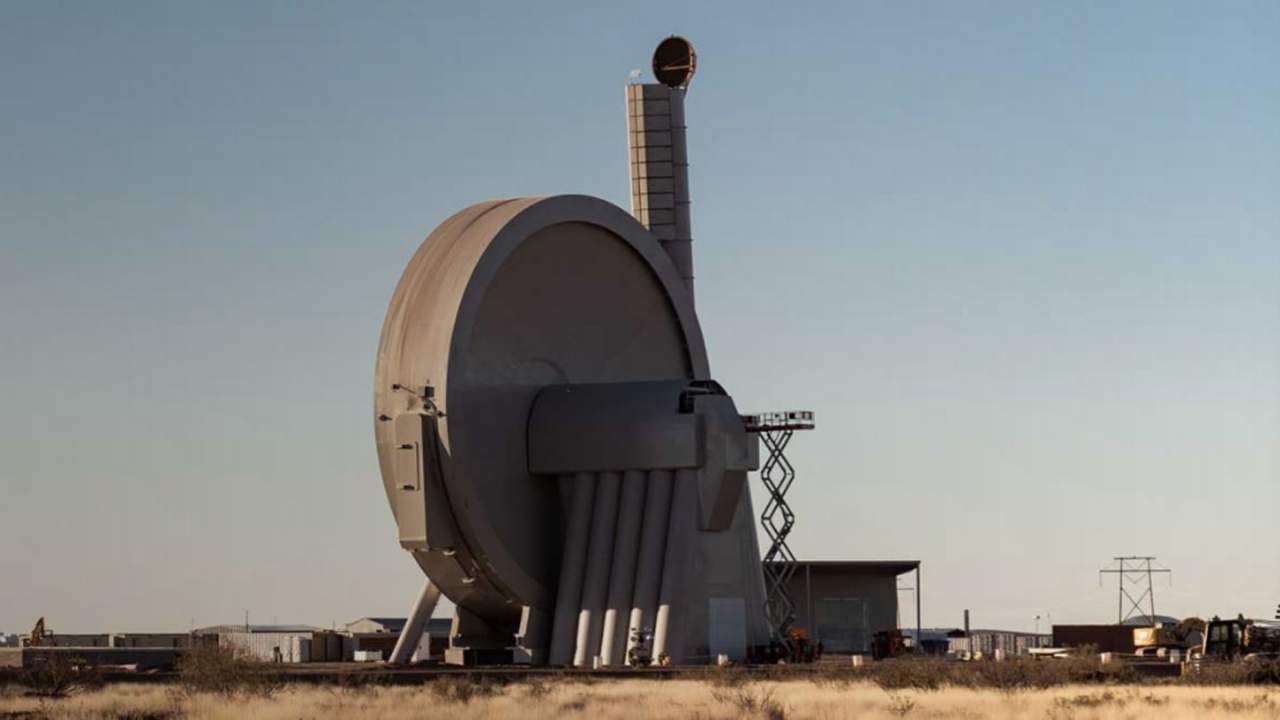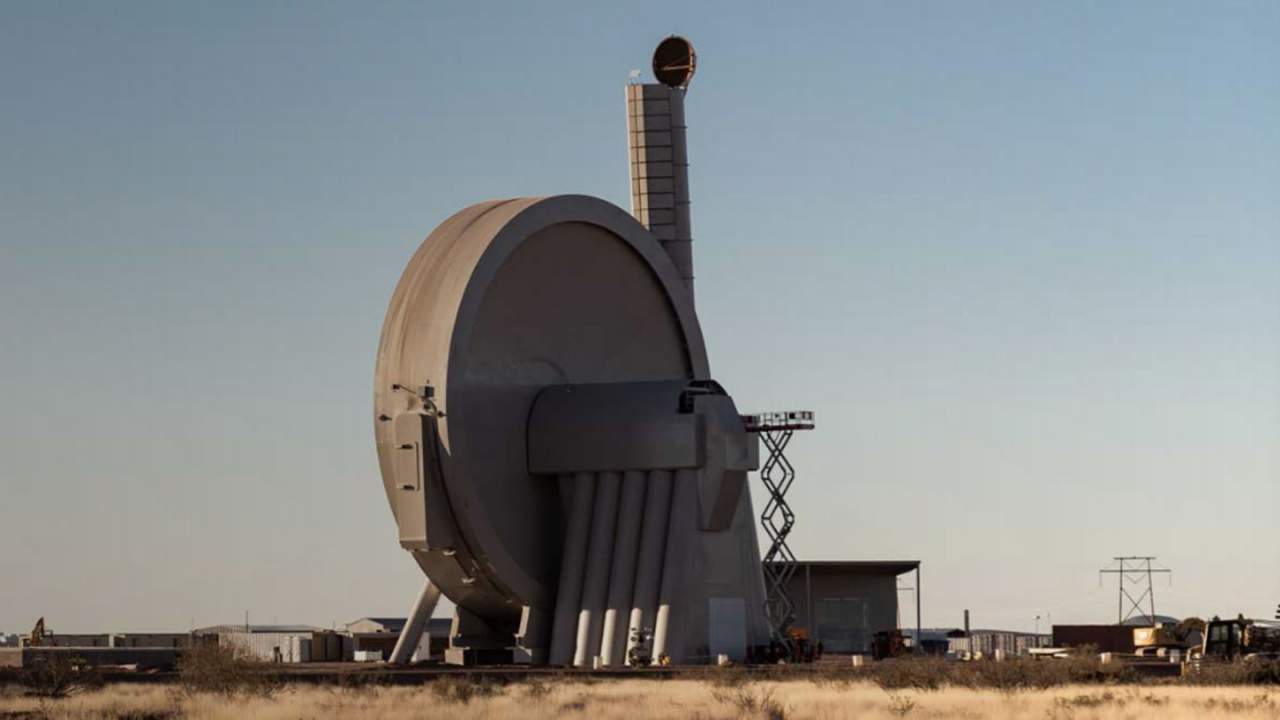
SpinLaunch Continues To Test Its Suborbital Accelerator
In order to increase access to space and make the journey faster, cheaper, and more efficient, many different companies and agencies within the space industry are trying different and unique innovations. This includes catching boosters out of mid air, landing on a moving ship, and much more. All of which present added risks however if successful, could improve the process of reaching space significantly.
SpinLaunch is one of those companies with by far one of the most out-there ideas in terms of accessing space in a unique way. The company aims to use an orbital accelerator to launch a small rocket and payload the majority of the journey into space. In recent years and months especially, the company has been continuing to test its suborbital accelerator.
While there are many skeptics, SpinLaunch is confident in its design and ambitious process for accessing space. This being said, the company still has a lot of work to do before any actual orbital attempt even happens. Here I will go more in-depth into the most recent SpinLaunch test, updates, and overview of exactly what the company plans for the future.
Recent Test Flight

SpinLaunch has been staying busy in recent months with many different tests of the company’s suborbital accelerator. This is in addition to some other news from the company not long ago. Most recently however, the company conducted its 8th flight test using the Suborbital Accelerator. Specifically, just a few weeks ago on April 28th, the company tweeted saying, “Seeing is believing! During last week’s flight test, we captured onboard footage of the flight test vehicle flying out of our Suborbital Mass Accelerator for the first time.” This tweet included a video of the test and showed footage from a camera on the payload itself as it was launched high into the air before falling back to Earth. In the past SpinLaunch has conducted quite a few of these suborbital tests with the same launch system. Each time the company has looked at different features and attempted to improve the results such as speed or altitude. This being said, it is still quite far away from an orbital test flight. On the most recent launch, SpinLaunch did not provide information on the results of the test but instead the camera footage onboard.
This news comes in addition to the recent contract between SpinLaunch and NASA. Not long ago in early April, SpinLaunch signed a Space Act Agreement with NASA. Through this partnership, SpinLaunch will develop, integrate, and fly a NASA payload on the company’s Suborbital Accelerator Launch System to provide valuable information to NASA for potential future commercial launch opportunities. This will be a great test as NASA themselves will be the judge of the work SpinLaunch is doing and what if any opportunities in the future it presents. Other than this recent news with NASA and the test only weeks ago, SpinLaunch has primarily been working on the Suborbital Accelerator and the process of trying different test flights.
SpinLaunch Plan & Future

Now that we know more about what exactly SpinLaunch has been up to, we can take a closer look at the goal and future plan of the company. In recent updates especially SpinLaunch has expressed that they intend to keep testing the suborbital accelerator quite a bit. This system features 5 main sections and parts that work together to send a payload flying out of it at high speeds. At the top, there are sonic flow reduction cavities. These internal baffles dampen the airflow entering the chamber as the projectile transitions into the atmosphere. Next, on the inside, it features an advanced composite tether. This is a high performance carbon fiber tether that supports the projectile as it accelerates to launch speed. At the very bottom, there is an adjustable launch cradle. This cradle not only supports the weight of the chamber but also provides a base for the launch angle articulation mechanism. You then have the vacuum chamber itself. This is a 1000 ton steel vacuum chamber that maintains the low pressure required for sustained high speed operation of the tether, minimizing aerothermal heating. Finally, you have the vacuum plant manifold. This arm leads to an underground vacuum plant responsible for removing air from the environment to create a low friction environment for spin up. All of which works together to launch a projectile around 30,000 feet in the air according to SpinLaunch’s seventh test with the accelerator.
SpinLaunch points out that the Suborbital Accelerator is designed to operate from 800 to 5,000 mph and acts primarily as a test-bed for the Orbital Launch System. On October 22nd, 2021, their first launch successfully propelled a test vehicle at supersonic speeds and ended with the recovery of the reusable flight vehicle. Throughout 2022 the system will conduct regular test flights with a variety of vehicles and launch velocities. The Suborbital System is intended to offer testing capabilities to customers and provides long term value as a satellite qualification facility. It is very likely in the future we will continue to see SpinLaunch using this accelerator for a large variety of different tests and more.
The next future plan of the company involves creating and using an actual orbital accelerator rather than a suborbital. However, as you can imagine, this change is quite the step up and presents a long list of challenges. SpinLaunch highlights that the SpinLaunch Orbital Launch System is a fundamentally new way to reach space. The velocity boost provided by the accelerator’s electric drive results in a 4x reduction in the fuel required to reach orbit, a 10x reduction in cost, and the ability to launch multiple times per day. In addition, the company has an ambitious timeline for the first customer launches only a few years away in 2025. The idea of this system is to make space sustainable among other things. They believe that with industry plans to launch ten times the number of satellites over the next decade, it is more urgent than ever to develop environmentally sustainable space access technology. Because kinetically launched satellites exit the stratosphere without a rocket, SpinLaunch is confident they enable a future in which constellations of satellites and space payloads can be launched with zero emissions in the most critical layers of the atmosphere. In a future where large numbers of people are traveling to space — structures, equipment, and supplies required to support in-space civilization must also be launched. For tens of thousands of people to someday work and live in space, millions of tons of infrastructure and supplies must be launched. SpinLaunch is planning to ensure that can be done with the least environmental impact possible. The company also describes its current path to orbit as a timeline. It started development in early 2015. Less than two years later, SpinLaunch surpassed the record for fastest rotational tip speeds and subsequently conducted hundreds of launches in its headquarters based laboratory. In October 2021, the first launch of the Suborbital System validated the technology and marked a key milestone. It now continues to test the system and is attempting to increase speed, altitude, etc.
Lastly, SpinLaunch is not only working towards an Orbital Accelerator in the future, but also a lot of space systems. The company points out that they have developed a new class of ultra low cost satellites. By utilizing mass manufacturing design principles, and reducing supply chain complexities, they have lowered the cost without compromising on performance. More specifically, the company is working on a very large list of different satellite components. One example is the 12U Micro Satellite Bus. The S-20 is a low-cost, mass manufactured satellite bus designed for rapid development and deployment of commercial constellations. It is the ideal size mix for a range of applications, including LEO constellations that provide services such as Automatic Dependent Surveillance-Broadcast (ADS-B), Internet of Things (IoT), Machine to Machine communications (M2M), Automated Identification Services (AIS) or Emergency communications platforms. The bus is also ideally suited for prototyping, technology development, and experimentation such as scientific research, space systems R&D, flight heritage qualification, or Earth Observation (EO). This is just one of many components including larger satellite buses, reaction wheels, batteries, solar panels, and much more. All of which meant to offer different companies within the industry.
Conclusion
The space industry currently has many companies trying unique new ideas to try and change how we access space. SpinLaunch is one of the most unique and ambitious with the goal of using an orbital accelerator rather than your conventional rocket. In recent weeks the company has continued to test its suborbital accelerator as they work towards the future of sending payloads into space. However, they still have a lot of work to do prior to reaching orbit. We will have to wait and see how it progresses and the impact it has on the space industry.
